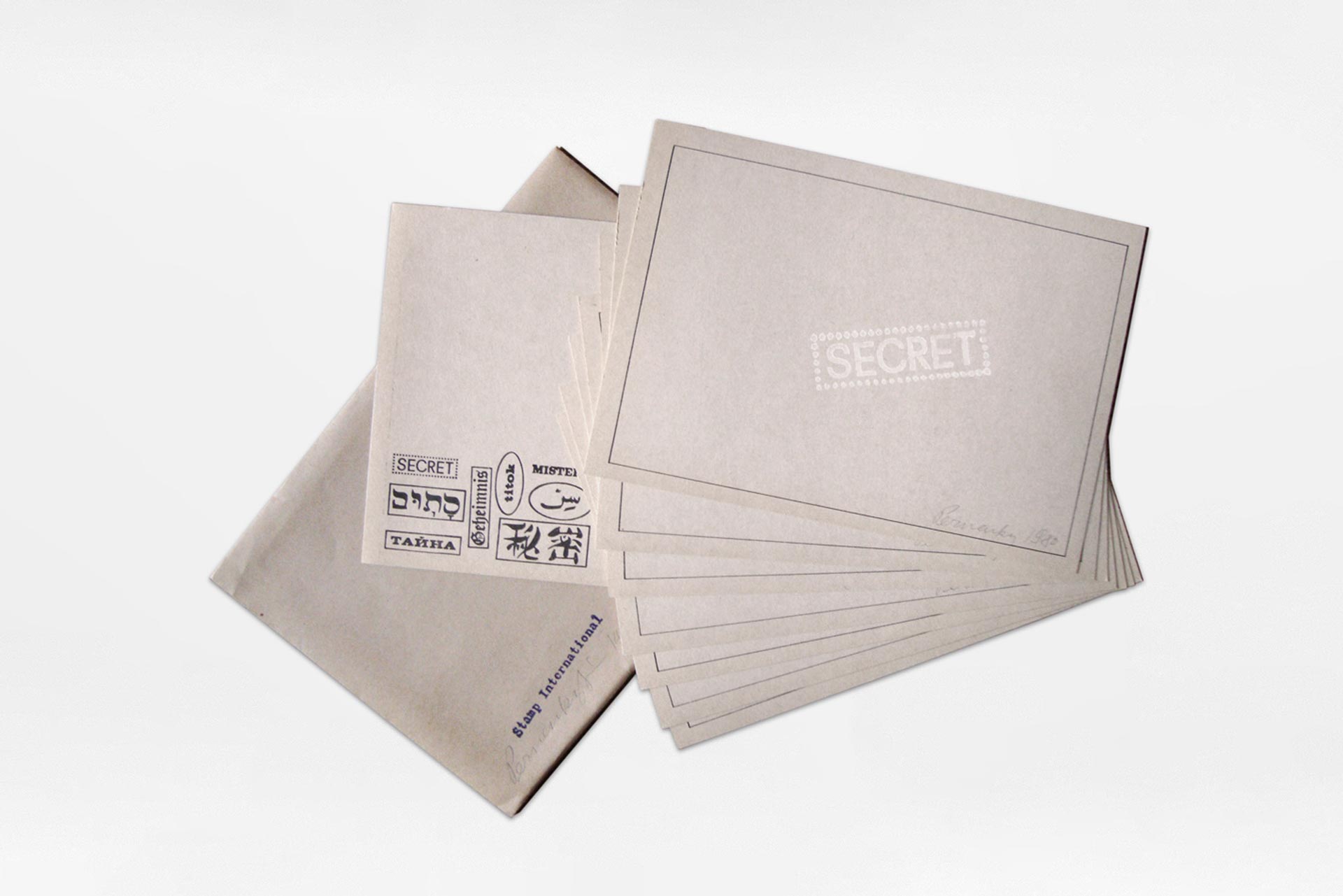In 1973 I started to experiment with the artistic use of rubber stamping also known from office work under the influence of my Czech friend, Jiri H. Kocman. In the ‘70s rubber stamp art became animportant medium for me.At that time this technique was discovered by the most diverse alternative trends such as Mail Art, but the works made by them kept their palm size, their miniature format appropriate for rubber stamps. As for me, at the beginning of the ‘80s I started thinking about using this popular technique in ‘grande art’ and expand it to a ’monumental’ genre.
Now that the artists’ stamp nevertheless finds its way into the museum – and into one, moreover, that stores the canvases of Rembrandt, Greco and the masters of Italian renaissance and French impressionism -, has the time now arrived to “discover” the artists’ stamp and proclaim it as a new, classic art-form.
The first artists’ stamps were designed by the neo-dadaist FLUXUS-artists. They too were the first to try to fool the post services with their stamps. Since then, the art-form has become slightly more subdued, but above all, it has swollen up into a far wider stream. Owing to the fact that the FLUXUS- artists have left the scene, today’s artists’ stamps are produced by the representatives of the so called Mail Art movement. Many members of this movement design stamps made and reproduced by various techniques; even larger is the number of those, who receive these stamps with other Mail Art-creations – tiny prints, collages, etc.- through the post, and sort them, classify them, put them into boxes, carefully file them, in other words – collect them. As we can see, the artists’ stamp is not identical with Mail Art as an art-form in general, as it is a more confined genre with origins that date back to a much earlier point in time. Nevertheless, it is a fact that today, artists’ stamps are produced and circulated almost exclusively in Mail Art-circles...
What is true for Mail Art in general is equally true in the case of the stamps produced in the world of Mail Art, – these stamps carry within them a particular concept of democratism. “Everyone’s an artist” – said Joseph Beuys, the widely acknowledged prophet of alternative movements. Mail Art participates with a slightly cooler enthusiasm in adorations of this kind, but this Beuys citation could be placed as a motto above every single present-day artists’ stamp...
The other point of the program – and there are many Mail Artists who would rank this one as the first: is communication...The Mail Art stamps on the other hand “struggle” and “portray”, with a naive belief or an ironic smile, but usually with the hope that the message will reach its destination, that communication will be successful because it is possible.
Géza Perneczky, Pictures from the Poll, Köln, 2011; and Géza Perneczky, Artist’s Stamps, Exhibition Catalogue, Museum of Fine Arts, May 29 – Sep 25, 1987.







